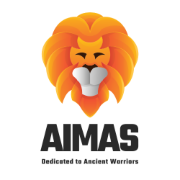I really like this martial arts data base website : http://www.mardb.com With courtesy and respect to this nice website I am sharing some of information I found on this website. If you wanna know more go to this website.
THANG TA is popular term for the ancient Manipuri Martial Art known as HUYEN LALLONG. The art developed from the war environment of the tiny state of Manipur in North-east India, which was an independent kingdom since the early Christian era. It played an important role in the geopolitical environment of medieval times in between India and China with many independent states at war with each other. Constant life and death struggles between clans, tribes and states resulted in the devising of ways and means of safeguarding the lives of the citizen soldiery and at the same time developing an inward attitude to problems of life, death and afterlife.
The art of the battle simultaneously envisioned a deep value system or world view ensconced within the culture of the small ethnic communities struggling for survival from constant attack from hostile neighbours and also to sustain a social order based on rank, status and kin affiliations of a collective kind.
The individual was always in deep relationship with the community using ritual as a means of constant regenerative action in tune with the movement of the spiritual world of ancestors beyond human life. The world of man was an outward revelation of the inner life of the natural world and the universe. Deep harmony between outer action and inner forces resulted in the use of the body in various forms of expression.
The art of the battle and the use of weaponry, when its warlike engagements were over, developed into a system of wielding objective elements in organic relationship with the cosmos. The body itself became a space where the tensions and dynamics of creation was worked out in a system of movements reflecting the essence of these creative forces. The whole world of the dynamic cosmos was recreated within the world of the body of man.
Physical Characteristics in Customary Usage and Ritual Practice :
- Khurumba (the bow) – where the forward/downward flexion of the relaxed spine is used.
- Tha Leiba -Rotation and tilts of the pelvic joint in different angles while supporting the torso in regular curvilinear uses are most common. The half turn of the chest are also common.
- Thong khong (bridge support) – The squat is also a familiar use of the lowering of the upper extremities nearer to the ground, where the two legs in deep bent position support the whole body, thereby proximally utilizing the use of the upper extremities at the ground level. Men use three positions of squat in a descending order to enable the firmer hold of the body in pro-gravitational positions.
- Wai teiba – a daily ritual of cleaning the floor by women. Women use a different flexible squat system with the bent knees opened out to enable the forward flexion of the torso or spine. The hand uses the washcloth with more space at her command while rubbing the floor. The entire system of body use are rich and varied, and the wrists could be most appropriately exploited in Khujeng Leibi (Wrist circling) to emulate the figure of eight.





No comments:
Post a Comment